Northland DHB steps up carbon emissions reduction target
Recognising the urgency to prevent global warming exceeding 1.5° Celsius Northland DHB has increased its commitment to further reduce its carbon emissions by 2030.
The organisation has set actions for a low carbon future to be in their vision He Hauora Mo Te Tai Tokerau, a Healthier Northland.
The DHB has a goal to achieve a net zero emission rate before 2050, and have updated their 2016 target of reducing carbon emissions by 15 percent by 2025 – to halving them by 2030.
The new target requires significant practice changes on every level, especially with the unprecedented growth for medical and surgical services in the region.
Besides continuous operational improvements, a set of sustainability policy rules have been approved to support the target:
- No new gas or other fossil fuelled boilers and equipment
- Green Star ratings for new hospital buildings over $10 million investment
- A set of rules for energy efficiency improvements and building renovations
- Offset helicopter and patient flights as per 2019 and offset all flights as per 2020
- Convert the light fleet to electric vehicles before 2025 and the heavy fleet before 2030
- Offset any emissions above our yearly carbon budget
Northland’s sizeable geographical area means road transport is one of the main challenges to tackle together with the energy emissions from all hospital buildings.
Since 2016 there has been good progress in reducing emissions by 16 percent, which is a 7 percent improvement over the last 12 months.
A crucial emission reduction project was the conversion of diesel boilers to electric heat pumps in all the district hospitals with the help of EECA loans, which has saved over 200,000 litres of diesel and around $300,000 per year in operational costs.
Our surgical department has made great reductions in the use of medical gases, particularly Desflurane; a product with a very high global warming potential, which was halved in the last year alone, avoiding almost 100 tCO2e.
Others include:
- Videoconferencing tripled over 2019, assisted by the expansion of Telehealth to include a new acute care network.
- Seven electric vehicles were added to the DHB pool car fleet, as well as traditional push bikes and e-bikes available for staff use.
- A 4-Green Star rating for Tohorā House, Northland DHB’s administration building
- Food is sourced locally where possible for patient and staff meals, and a number of products have been switched to biodegradable alternatives.
- An additional 100 recycling bins have been installed throughout the DHB’s hospitals and other programs now in place see better recycling of PVC products including oxygen masks, tubing and IV bags.
These outcomes show it is possible to reduce our environmental impact and emissions, without impacting patient care or health outcomes.
Click here for the Northland DHB Carbon Footprint Summary Report
Last modified:
